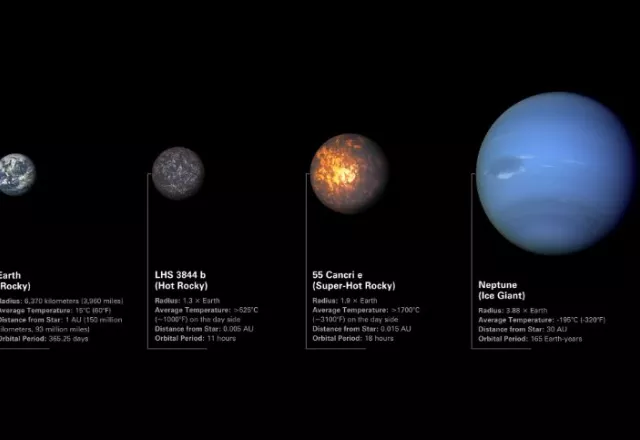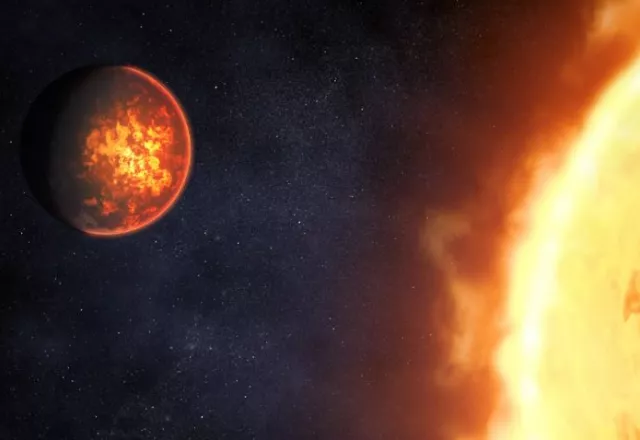What scientists know so far – Just 18 hours of the year … on the planet 55 Cancri e – High expectations at NASA from the operation of the James Webb telescope
This is an evolving super-earth, for a planet that in the distant future will be “sunk” by millions of speciesor for a fiery hell?
The above and many more questions are asked to be answered by astronomers, in an ambitious plan to locate and study -if possible- extraterrestrial life, in whatever form it is. State-of-the-art telescopes orbiting the Earth offer astronomers amazing possibilities to gather data and study other worlds, very different from or similar to our own.
The Super-Earth 55 Cancri e, is a huge planet with a surface covered by lava rivers. NASA says the James Webb Space Telescope is “just a few weeks away” from the revelation of “55 Cancri e”, which it calls “super-hot super-Earth”.
55 Cancri e – about 50 light-years from Earth – is less than 1.5 million miles from its sun-like star. Compared to our solar system, this is 1/25 of the distance between our Sun and Mercury, where the average temperature is 354 degrees Fahrenheit.
The … year on the hot planet lasts only 18 hours
The 55 Cancri e takes just 18 hours to orbit its star, compared to the 365 days it takes the Earth to orbit our sun. In other words, the year on the hot planet is only 18 hours, which is due to its very close distance from the star.
“With surface temperatures well above the melting point of typical rock-forming minerals, the daytime side of the planet is believed to be covered by lava oceans,” NASA said of the 55 Cancri e.
NASA describes this type of planet as “a class of planets that does not look like anyone in our solar system.” “They are bulkier than Earth, but lighter than ice giants like Poseidon and Uranus, and can be made of gas, rock or a combination of both. “They are twice the size of the Earth and up to 10 times its mass.”
Theories about its nature
NASA scientists have put forward a theory that this is because the planet has “a dynamic atmosphere that moves heat around.”
Another theory is that if the planet rotated to create day and night, “its surface would heat up, melt, and even evaporate during the day, creating a very thin atmosphere that the Webb could detect.” says NASA. “At night, the steam will cool and condense to form lava droplets that would rain back on the surface, and solidify again as night falls.”
The first observation of the planet is expected sometime this summer after the launch of the James Webb Space Telescope. The telescope is also likely to help scientists deepen their understanding of another distant planet – the airless LHS 3844 b.
I have over 8 years of experience in the news industry. I have worked for various news websites and have also written for a few news agencies. I mostly cover healthcare news, but I am also interested in other topics such as politics, business, and entertainment. In my free time, I enjoy writing fiction and spending time with my family and friends.












